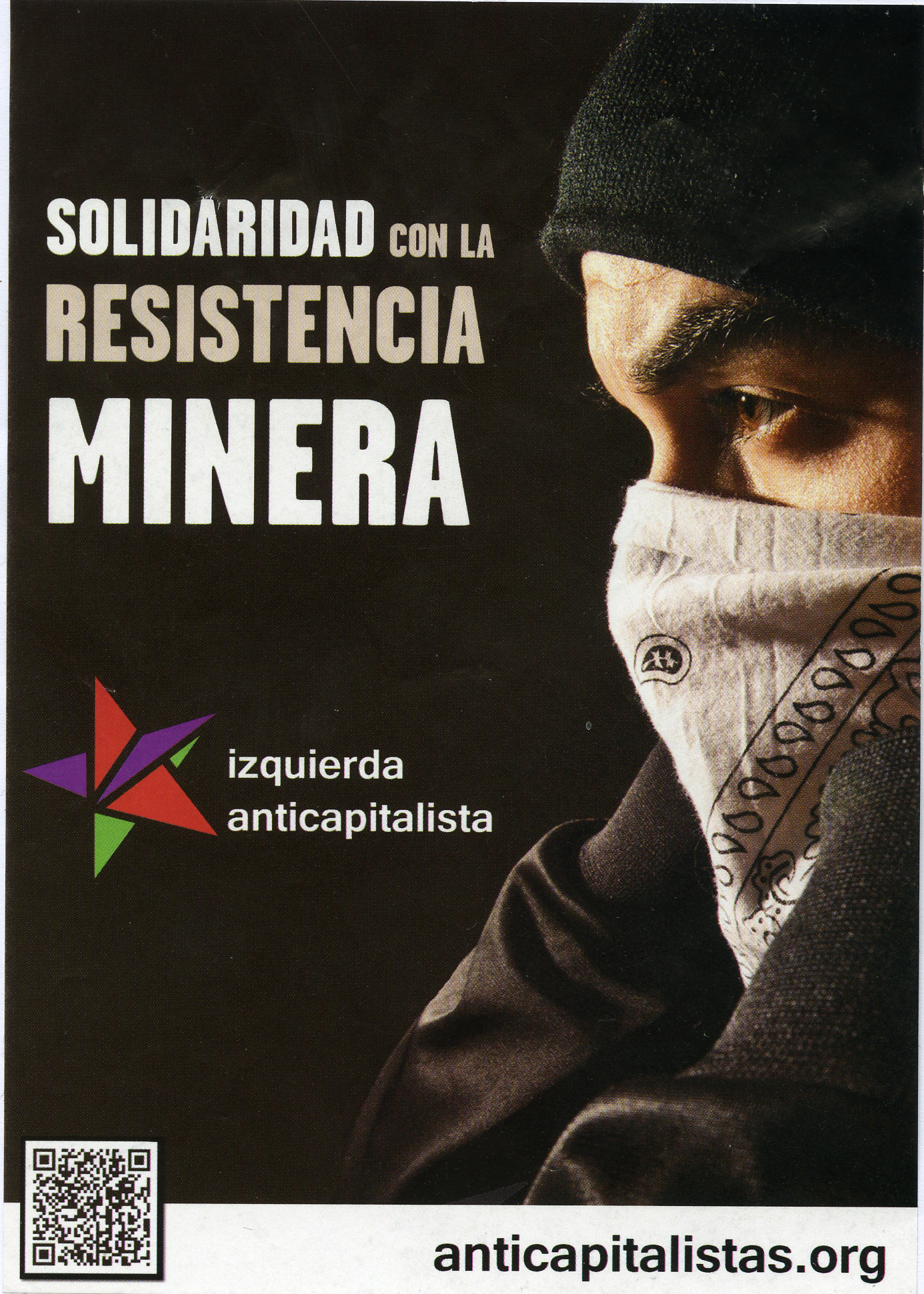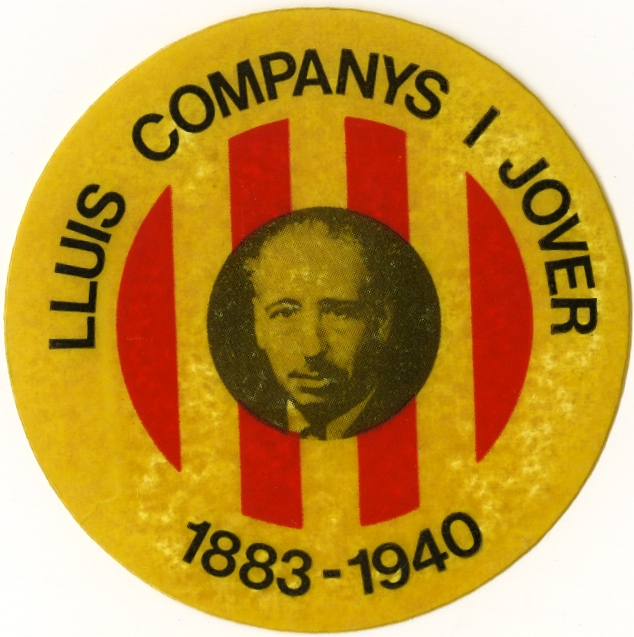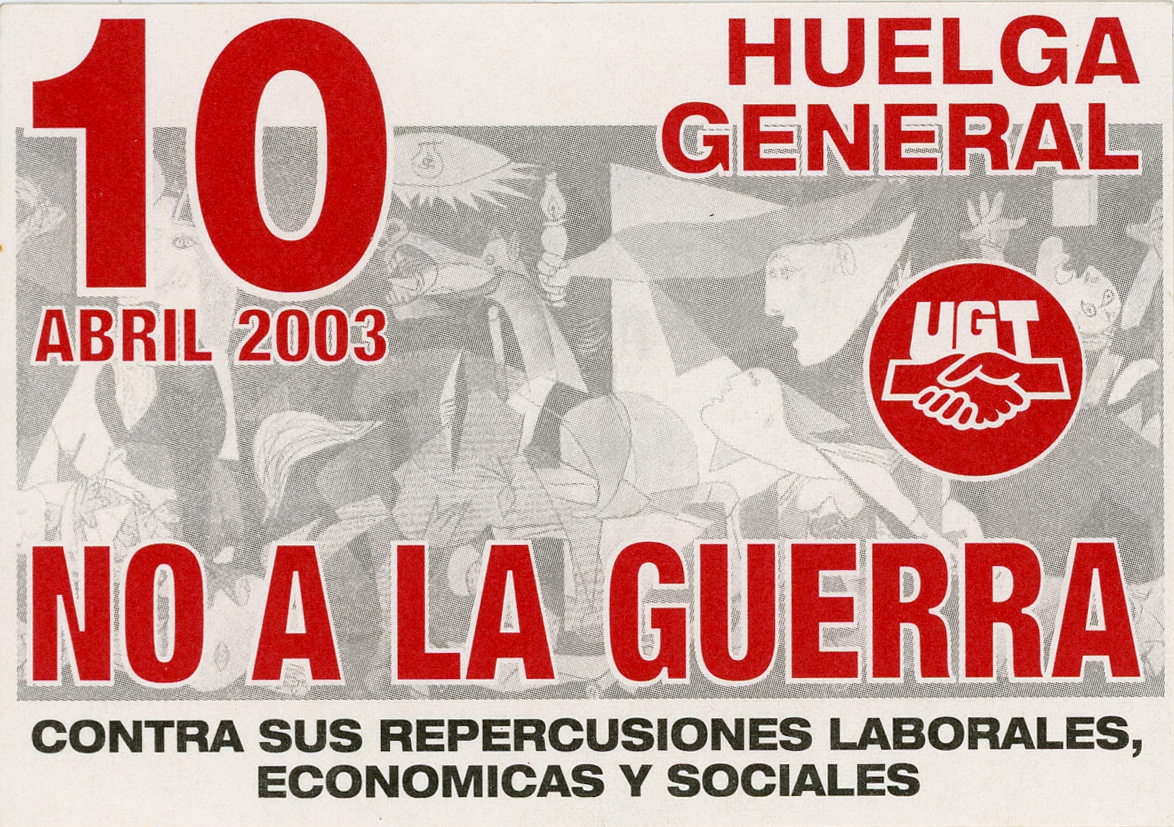Marina Llorente – Fall 2014 Spanish writing assignment
SLU professor Marina Llorente will be having her students analyze stickers from Spain again this semester for her course Español 439: Literatura, cine y cultura de masas en la España contemporánea. She gave this assignment in the fall of 2012 (see previous posts on Catalonia stickers from 1970s-80s and stickers from Madrid, summer 2012, Solicitud de pegatinas españolas / Request for Spanish stickers, and New stickers from Spain for digital archive and writing assignment), and the students enjoyed it quite a bit. I’ve spent the last couple of months making a concerted effort to expand my Spanish sticker collection for this project and now have over 500 examples from different parts of the country (Madrid, Barcelona, Asturias, Galicia, etc.) dating from the 1980s to present day.
To prepare for the assignment, Marina and I met last week to go through my recent acquisitions from several contributors: the Spanish poet Jorge Reichmann, SLU professor of Spanish Steven White, Oliver Baudach at Hatch Kingdom, and Gabriel Garcia Ruiz and other contacts in Spain. Marina and I put together seven sets of eight stickers each representing a variety of socio-political themes: the environment, political parties, gender, the Spanish Constitution, workers’ unions, student strikes, and the Catalonian separatist movement. Students will work in pairs to write short bilingual description fields for each sticker that will be added to the Street Art Graphics digital archive. It’s a lot tougher than it may sound to write these description fields. One needs to list all of the visual and textual elements (subjects, logos, colors, composition, graphic design, etc.) and outline what these elements represent or mean. Descriptions are limited to 150 to 200 words each in English and Spanish.
Here is one from 2012 written by Michael Hickey ’13:
Solidaridad Con La Resistencia Minera — Izquierda Anticapitalista (Solidarity With The Miner’s Resistance — Anti-Capitalist Left)
“In the spring of 2012, in response to the Spanish government’s severe austerity measures, Spanish miners from Asturias united to raise awareness and call for justice. With high unemployment, the miners became guerrilla freedom fighters looking to save their jobs and the mining industry. The protesters went on strike in late May and shut down the country’s coal supply to protest the government’s decision to reduce mine subsidies by 63 percent. Anticapitalistas.org is the Web site for Izquierda Anticapitalista, an organization that fights against ‘oppression, exploitation, and the domination of people and nature.’ The sticker depicts the profile of a man wearing a knitted watch cap and a bandana to conceal his identity. The sticker also contains a QR code, easily scanned with a smart phone application to spread the resistance movement.”
“En la primavera del 2012, en respuesta a las severas medidas de austeridad del gobierno español, los mineros españoles de Asturias se unieron para concienciar y pedir justicia. Con un desempleo alto, los mineros se convirtieron en guerrilleros por la libertad intentando salvar sus trabajos y la industria minera. Los manifestantes fueron a la huelga a últimos de mayo y cortaron el suministro de carbón del país para protestar en contra de la decisión del gobierno de reducir el subsidio minero al 63 por ciento. Anticapitalistas.org es el portal de la red Izquierda Anticapitalista, una organización que lucha en contra de ‘la opresión, explotación y la dominación de la gente y la naturaleza.”’La pegatina presenta el perfil de un hombre que lleva un gorro de lana y un pañuelo para ocultar su identidad. La pegatina tiene también un código QR que puede escanearse fácilmente con la aplicación de un smartphone para diseminar este movimiento de resistencia.”
Here’s another one from the same student:
Lluís Companys I Jover — 1883-1940
“This tribute sticker presents a photograph of Lluís Companys i Jover over stripes of yellow and red, two colors synonymous with Catalonia and the region’s long struggle to become an independent state. Companys was actually born in 1882 and was the leader of the Esquerra Republicana de Catalunya (ERC) or Republican Left of Catalonia. Founded in 1931, the ERC remains a nationalist party that seeks independence from Spain. Companys served as President of the Generalitat of Catalonia between 1933 and 1940. After the Spanish Civil War, he went to France but was later captured by the Gestapo secret police and sent to a Spanish jail where he was tortured and later executed by a firing squad. Companys was one of the most influential martyrs of the Catalonian separatist movement, and his death has inspired thousands of nationalists who seek independence.”
“Esta pegatina homenaje presenta una fotografía de Lluís Companys i Jover sobre rayas amarillas y rojas, los colores de la bandera catalana que remiten a la larga lucha de la región por llegar a ser un estado independiente. Companys nació en 1882 y fue el líder de Esquerra Republicana de Catalunya (ERC) o la Izquierda Republicana de Cataluña. Fundada en 1931, la ERC sigue siendo un partido nacionalista que busca la independencia de España. Companys fue presidente de la Generalitat de Cataluña entre 1933 y 1940. Después de la Guerra Civil, se marchó a Francia pero capturado más tarde por la policía secreta de la Gestapo y enviado a una cárcel española donde fue torturado y más tarde ejecutado por un pelotón de fusilamiento. Companys fue uno de los mártires más influyentes del movimiento separatista catalán, y su muerte ha inspirado a miles de nacionalistas que buscan la independencia.”
———————————————————————-
As a side note, I needed to scan some additional stickers yesterday for the upcoming assignment. My associate at work, Carole Mathey, asked if it was a hassle to do all this scanning, but I described how it allows me to get to know the stickers a little better. Sometimes I see things in the digital image more readily than in print, and the scanning, cropping, and color correcting forces me to look very closely at each image. Carole called it “speed dating.” A muted, light grey version of Picasso’s Guernica is represented in the background of this sticker underneath bold red letters, for example, which I didn’t notice until I scanned the sticker.


